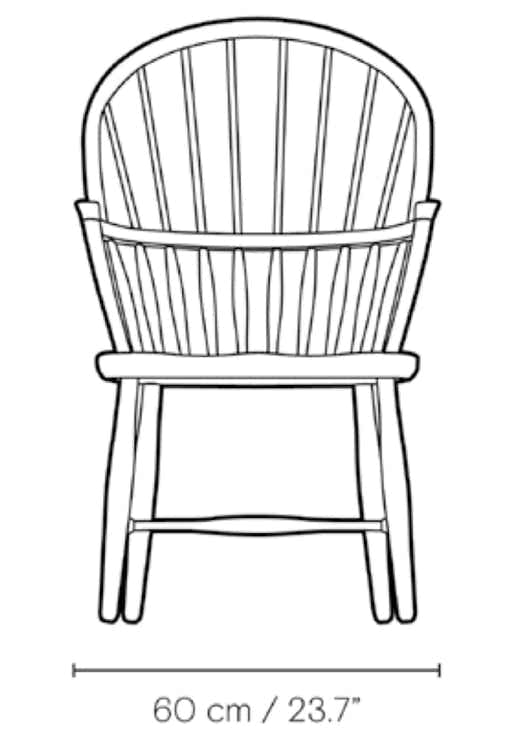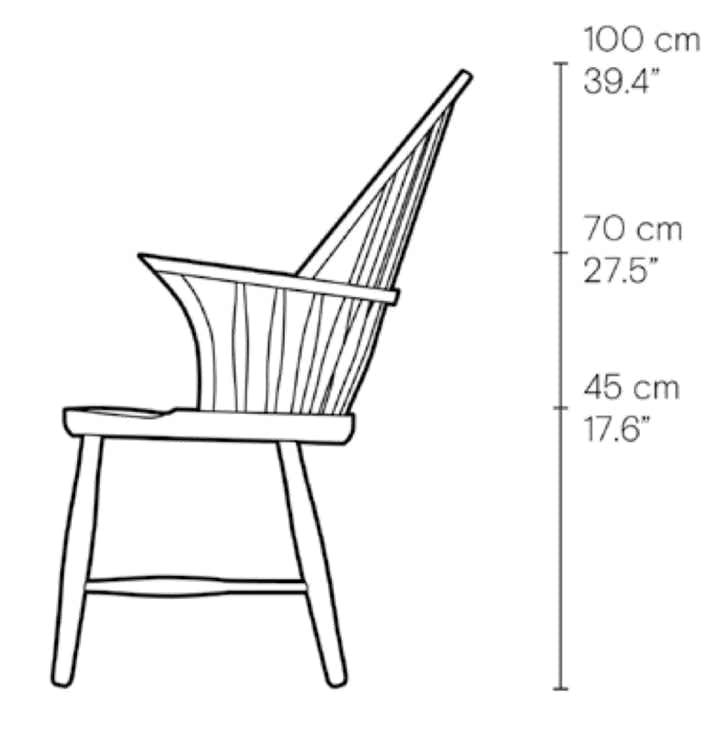Home > Carl Hansen > -Chairs > FH38 Windsor chair
Home > Carl Hansen > -Chairs > FH38 Windsor chair
15% off with DESIGN15
It was in 1938 that the Danish cabinetmaker architect Frits Henningsen designed the sculptural Windsor Chair. This classic model was in continuous production at Carl Hansen & Søn from its creation to 2003. It now comes out with a comfortable seat cushion.
The Windsor style is characterized by a carved wooden seat on which the base and the backrest are directly fixed, generally made up of thin rods fitted into a curved piece of wood forming the top of the backrest. This style originated in the city of Windsor, England, before being adopted and developed in North America in the early 18th century.
The Henningsen version of the Windsor chair is a high-back solid oak dining chair that hides many challenges in craftsmanship, as many different carpentry techniques are used. Its manufacture requires the skills of an experienced carpenter, like Frits Henningsen himself.
Materials solid oak
Dimensions L60 x P67 x H100 cm – Seat Height 45 cm – Armrest Height 70 cm
Windsor chair FH38 – Soaped oak
Cushion FH38 – Loke 7750 leather
Cushion FH38 – Loke 7150 leather
Cushion FH38 – Loke 7748 leather



Frits Henningsen 1889-1965
Recognized as an uncompromising designer, Frits Henningsen saw quality craftsmanship as essential and, unlike most cabinetmakers, always designed his own furniture.
In 1911, at the age of 22, Henningsen (1889-1965) completed his cabinetmaking apprenticeship with one of the most recognized cabinetmakers of his time, I.P. Morck. He then traveled across Europe to gain experience and inspiration, working in Germany, France and Britain before returning to Copenhagen in 1915. He then opened his own furniture store, s relying on customer feedback to better understand demand and improve production processes.
As a member of the Cabinetmakers Guild of Copenhagen, Henningsen became a major driving force in furniture exhibitions of the day, gaining recognition for his perfectionist style and vibrant personality. He gave new expression to traditional designs by drawing inspiration from French Empire, Rococo and 17th century British furniture.
Henningsen was strongly influenced by Kaare Klint, one of his teachers at the technical college. The competition between them has led to a constant renewal and reinterpretation of furniture craftsmanship on both sides. For Henningsen, it was the piece of furniture - not its creator - that deserved center stage. This is one of the main reasons why his designs never achieved the same popularity as those of some of his contemporaries.
Henningsen's more functional style of design developed from historical inspiration to simpler, timeless workmanship that remains relevant today. His work is rooted in classic craftsmanship with a design expression that has broad appeal - a combination embodied in his Heritage Chair and his final design, the Signature Chair.